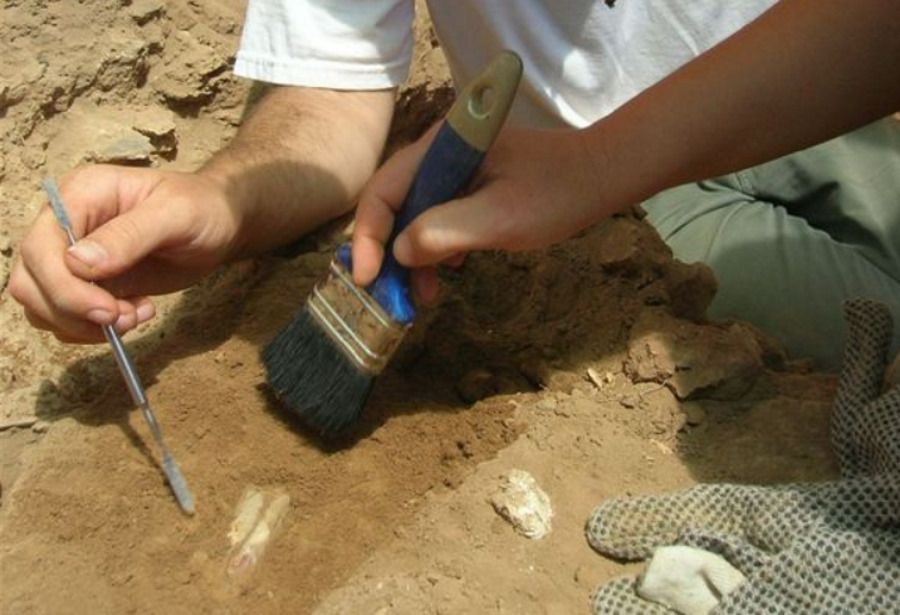More than a thousand years ago steam baths were known on the territory of present-day Poland
The familiarity of steam baths spread across Central Europe more than a thousand years ago thanks to the. Slavs. Thus, it is not true that the custom of bathing became widespread in this part of the world only with the return of knights from the Crusades from the Holy Land, archaeologist Anna Tyniec tells PAP.
On the territory of Italy already more than two thousand years ago, monumental aqueducts were erected, while on the territory of Poland at that time there was a lack of such structures. Does this indicate that inoAt that time in Central Europe, people did not care about hygiene and avoided bathing? Absolutely not,” answers archaeologist Anna Tyniec of the Archaeological Museum in Cracow.
– In our part of Europe, the availability of water was definitely more widespread than, for example, in the motherland of the Roman Empire – emphasizes the conversationoPAP. – Thus, neither the Slavs nor the peoples whoore previously lived in our present lands, they did not have to go to any trouble at all to take advantage of the benefits of water. Access to water was easy thanks to a dense network of rivers and many sources ofounderground waterways – so no aqueductoin not due to cultural backwardness, but other conditionsoIn environmental.
Archaeological research shows that the Slavs established their first settlements very close to rivers, moorsoin, the terrainoin wetlands or lakes – in the valleys of watercoursesoin water.
– This was the case until the middle of the 11th century, when there was a period of numerous so-called “Slavic” constructions. Flash floods due to increased and heavy rainfallow. From their consequences, people fled to higher ground. Most often, these are the locations of many wspoThe villages we know today,” says Tyniec.
According to her, this indicates that the early Slavs had a very close relationship with water – especially by the 11th century. They certainly used the benefits of water on a daily basis, roalso for daily hygiene, simply by bathing in lakes or rivers,” believes Tyniec.
The Slavs also erected steam baths. They were probably used less frequently, as it took some effort to get them up and running. – Their relics have been found by archaeologists for very many years, even though they often did not realize this fact – just in a different wayob interpreted someore their discoveries,” the specialist adds.
What such installations looked like? They were small square in plan, slightly sunken into the ground buildings with wall lengths reaching approx. 3,5 m. They were made using the log technique, which involved laying wooden beams horizontally and joining them at the corners. Inside, archaeologists discover at most single fragments of vessels, nevertheless they often describe them as dwelling houses. – However, the sheer size indicates that they must have served a different purpose, the researcher points out.
To the cornerolarge, hearth-heated stones were brought into the building. Then they were poured with water – on the same principle they work wspomodern Finnish baths. Archaeologists are even aware of examples of special „platforms”, on ktoof which the stones were placed.
– Our interpretation is confirmed by the study of stones in the case of the Slavic settlement in Brzezie. It appears that the granite boulders were thermally altered. The site of their discovery did not bear a traceoin burning fire,” adds the archaeologist.
Finds in the form of such structures come from the areaoin Poland from as early as the 8th-10th centuries.
– So it was the Slavs who led to the spread of the tradition of washing in steam baths in Central Europe. It has long been thought that the renaissance of the custom of bathing spread over the Vistula only with the return to Europe of knights from the crusades to the Holy Land. In light of the latest research, this is not entirely true,” adds Tyniec.
In the researcher’s succor come the accounts of podro¿nikoIn the Arab ones from that period. Detailedolently appeals to the imagination the text of Ibrahim Ibn Jacob, whoory held ok. 965 r. podro¿ to Germany and the countryoin the West Slavic. He described a structure made of wood, whichoThe crevices were plugged with moss. Inside "build a stone oven in one corner and cut into the gorze in front of it a window and close the door of the house. Inside there are tanks for water. They pour this water on a lit stove and clouds of steam rise" – reported.
– Buildings partially sunk into the ground were not widely known outside of Eastern and Central Europe, so Arab authors considered them to be something wyroof the Slavic construction industry,” explains Tyniec.
In the account of Ibrahim Ibn Jacob there is also an important observation regarding the aspect of theoin health baths used by Slavs. PodroThe scientist found that after taking "bathe" users of "domkow" "pores open up and unnecessary substances come out of their bodies. Streams of sweat flowed from them and not a trace of scab or scab remains on any of them."
According to Tyniec, this means that probably the indicated ailments skorne Ibn Jacob observed in other peoplesow oEarly Europe, but not at the Slavic.
The proximity of the Slavs to the aquatic environment is evidenced by the legends recorded in romantic literature on robocreatures or fantasy creatures inhabiting lakes or marshes – utopcow or rusals.
– Probably many of them even come from the timeoin the Middle Ages, which further reinforces the belief that the ancient Slavs were very intimate with rivers and lakes,” concludes the Krakow archaeologist.


